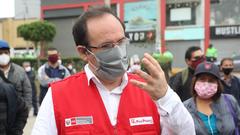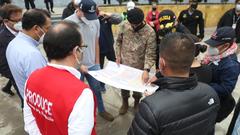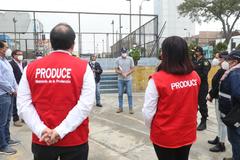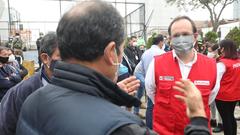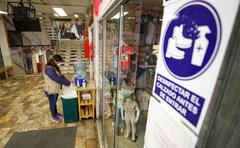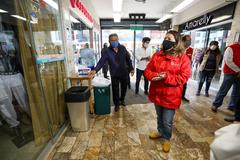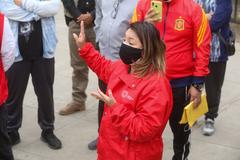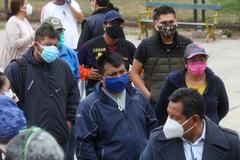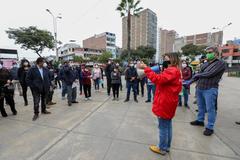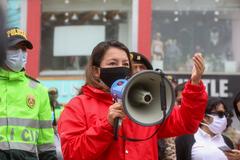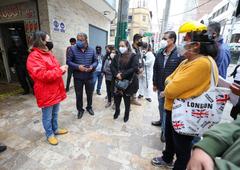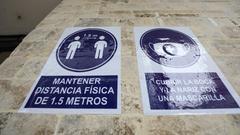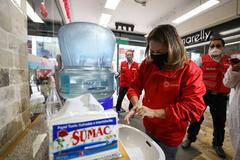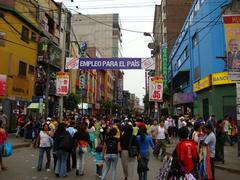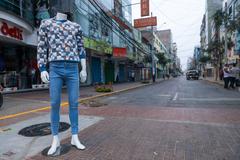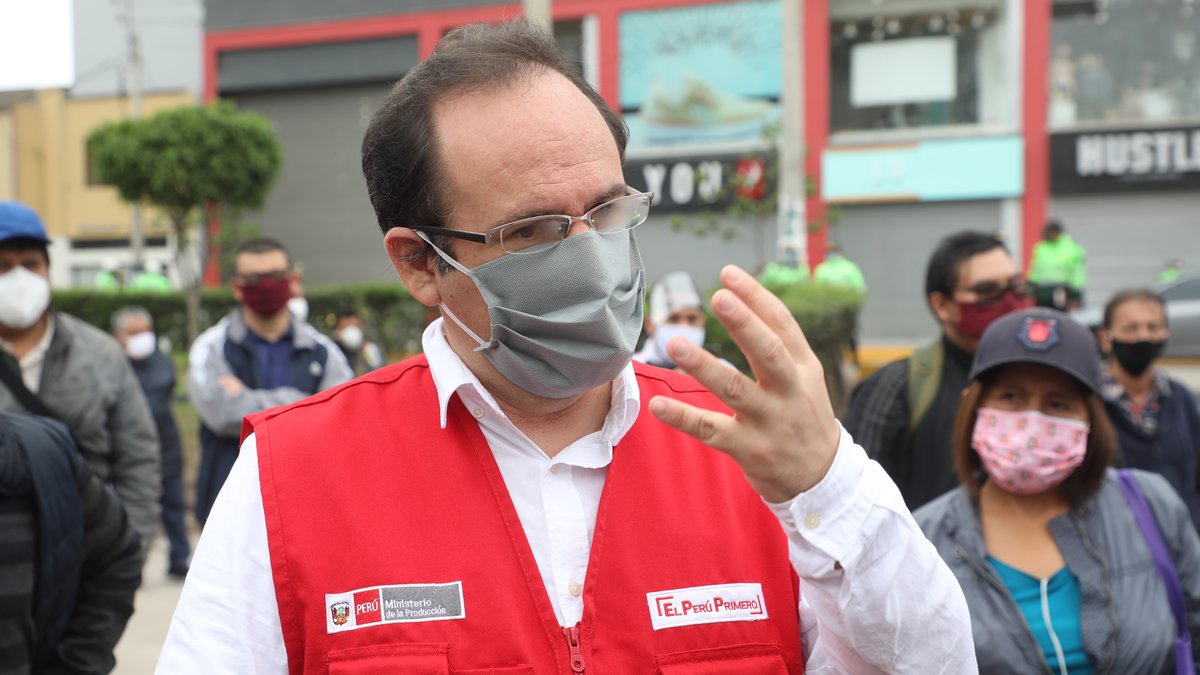
Emporio Comercial De Gamarra Visiting Guide: Lima, Peru – Tickets, Hours, and Essential Tips
Date: 14/06/2025
Introduction: Gamarra’s Legacy in Lima
Emporio Comercial de Gamarra is the beating heart of Lima’s textile industry and among the largest commercial hubs in Latin America. Located in the La Victoria district, Gamarra is famed for its sprawling markets, affordable yet high-quality textiles, and the entrepreneurial drive of thousands of small businesses. More than a shopping destination, Gamarra reflects Peru’s industrial heritage, diverse culture, and economic resilience, making it a must-visit for travelers, businesspeople, and culture enthusiasts alike (Wikipedia; Yale Globalist).
This guide offers a comprehensive overview of Gamarra’s history, layout, economic significance, visitor information, and practical tips to help you make the most of your trip.
Table of Contents
- Historical Overview
- Economic Significance
- Layout and Navigation
- Visitor Information: Hours, Tickets, and Getting There
- Main Attractions & Shopping Experience
- Safety, Accessibility, and Practical Tips
- Nearby Attractions
- Frequently Asked Questions (FAQ)
- Conclusion and Recommendations
- References
Historical Overview
Origins and Growth
Gamarra’s industrial roots date back to the late 19th century, with the establishment of pioneering textile factories like Fábrica de Tejidos Santa Catalina in 1889. The area quickly became a magnet for migrants seeking work, fostering an industrious, multicultural community. By the 1920s and 1930s, La Victoria’s urban planning and influx of new residents set the stage for the rise of a vibrant textile cluster (Wikipedia; Yale Globalist).
The Rise of the Textile Cluster
From the 1950s onward, Gamarra’s reputation as a garment manufacturing hub grew. Despite regulatory challenges and widespread informality, the district became synonymous with affordable, quality clothing for all of Lima. The 1990s brought modernization but also intensified competition and challenges linked to informality (Yale Globalist).
Modernization and Expansion
The past three decades have seen significant upgrades, such as the opening of Parque Cánepa and Gamarra Moda Plaza, which added modern shopping centers and amenities. Today, Gamarra stretches over 24 blocks, blending formal galleries with a lively informal economy (Wikipedia).
Economic Significance
Scale and Impact
Gamarra is home to more than 30,000 businesses and supports over 80,000 direct jobs, with numbers swelling during peak retail seasons (Infobae). Annual sales often exceed S/ 6 billion (about $1.6 billion USD), making it a vital engine for Lima’s and Peru’s economies (Wikipedia; Infobae).
Employment and Entrepreneurship
Gamarra’s high density of micro- and small-enterprises (MYPEs) is a testament to Peru’s entrepreneurial spirit. Many businesses are family-run or founded by migrants, contributing to a dynamic, innovative marketplace that now leverages e-commerce and digital marketing (La República; Instituto Gamarra).
Ongoing Challenges
Despite its dynamism, Gamarra faces issues like informality, congestion, and security. Authorities continually work to formalize commerce and improve urban management, but the blend of formal and informal enterprise remains a defining feature (Wikipedia).
Layout and Navigation
Geographic Structure
Gamarra spans 24–54 city blocks, organized around key thoroughfares such as Jirón Gamarra, Jirón Humboldt, and Avenida Aviación. The market is divided into dameros (blocks) A, B, and C, with Damero A being the most commercially valuable (Guía de Gamarra). Over 200 multi-story galleries house more than 40,000 businesses, with open-air stalls lining the streets (Perú.pe).
Navigational Resources
Maps and directories are available online (Guía de Gamarra) and at major entrances. The market can be overwhelming—using Google Maps or the Moovit app is highly recommended for real-time navigation.
Visitor Information: Hours, Tickets, and Getting There
Visiting Hours
- Monday–Saturday: 8:00/9:00 AM – 6:00 PM (some stores may open earlier or close later during peak seasons)
- Sunday: Limited activity; many shops closed or with reduced hours
Entry and Tickets
- Entry: Free; no tickets or reservations required (Tierras Vivas)
How to Get There
- Metro: Lima Metro Line 1 (Gamarra Station) is the most efficient and secure option.
- Buses: Multiple lines serve La Victoria.
- Taxis/Ride-Hailing: Use registered taxis or apps (Uber, Beat, Cabify) for safety.
- Parking: Limited; public transport is preferable.
Main Attractions & Shopping Experience
Textile and Fashion Shopping
Gamarra is renowned for its variety and affordability—from raw fabrics to finished garments, including casual wear, formal attire, sportswear, and traditional Peruvian clothing made from prized Pima and Tangüis cotton (Perú.pe).
Notable Galleries and Shopping Centers
- Galería San Pedro: Trendy styles at affordable prices.
- Galería Santa Lucía: Wholesale specialist (Tierras Vivas).
- Galería Los Fabricantes: Seasonal garments.
- Galería The King: Diverse men’s and women’s fashion.
- Blehnic Store: Formalwear and uniforms.
Wholesale and Export
Gamarra is a go-to wholesale market for local and international buyers, with exports reaching other Latin American countries and beyond (Gamarra Experiencia de Compra).
Events
Look out for fashion shows and Gamarra Fashion Week, which highlights local designers and offers substantial discounts (Gamarra Experiencia de Compra).
Safety, Accessibility, and Practical Tips
Safety Overview
- Gamarra is vibrant but not as secure as districts like Miraflores.
- Risks include pickpocketing, bag-snatching, and scams.
- Police and private security are present, especially during peak hours (Machu Travel Peru).
Safety Tips:
- Dress modestly, avoid displaying valuables.
- Use anti-theft bags and keep them in front.
- Visit during daylight, ideally on weekdays and mornings.
- Stick to main, busy streets.
Accessibility
- Many galleries have elevators, but crowding and narrow pathways can create obstacles.
- Wheelchair access is limited in some areas—call ahead or plan for assistance if needed.
Practical Tips
- Cash is king: Most transactions are in soles; bring cash for small purchases.
- Bargaining: Expected—start 10–20% below the asking price.
- Language: Basic Spanish is helpful; English is rarely spoken.
- Food: Street food and casual eateries abound; for hygiene, stick to established restaurants.
- Restrooms: Limited; use facilities in larger shopping centers.
- Luggage: Travel light; there are no official luggage storage options.
Nearby Attractions
- Estadio Alejandro Villanueva: Home of Alianza Lima football club.
- Plaza Manco Cápac: A local landmark.
- Central Lima: Just a short ride away, with museums, cathedrals, and historical plazas.
- Miraflores & Barranco: Easily accessible for coastal walks and nightlife.
Frequently Asked Questions (FAQ)
Q: What are Gamarra’s official visiting hours?
A: Most shops are open Monday–Saturday, 8:00/9:00 AM–6:00 PM. Sundays see reduced activity.
Q: Is there an entrance fee?
A: No, entry is free for all.
Q: Are guided tours available?
A: While there are no official tours, local operators offer textile and cultural walking tours.
Q: Is Gamarra safe for tourists?
A: Yes, with standard precautions—avoid isolated areas, keep valuables secure, and visit during the day.
Q: What payment methods are accepted?
A: Cash is preferred, but some larger shops accept cards.
Conclusion and Recommendations
Emporio Comercial de Gamarra is Lima’s living testament to creativity, industriousness, and cultural diversity. Whether you’re seeking quality textiles, exploring local entrepreneurship, or immersing yourself in the city’s working-class spirit, Gamarra is an experience like no other. Visit during weekday mornings for a smoother experience, remain vigilant with your belongings, and embrace the vibrant atmosphere. For the latest updates, travel tips, and exclusive guides, download the Audiala app and follow us on social media.
